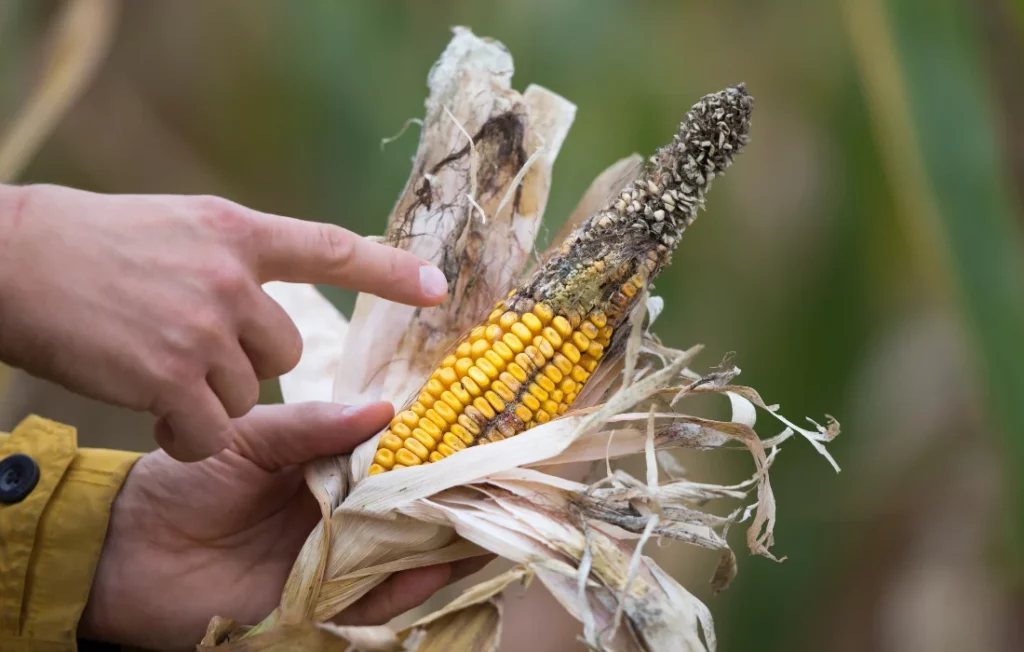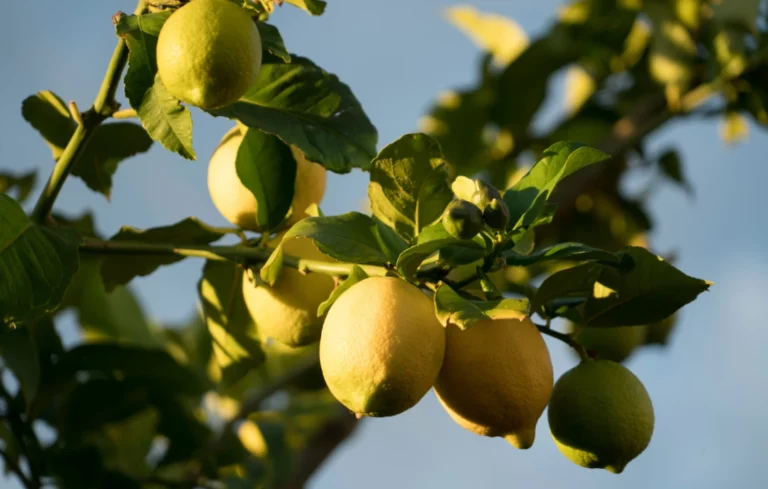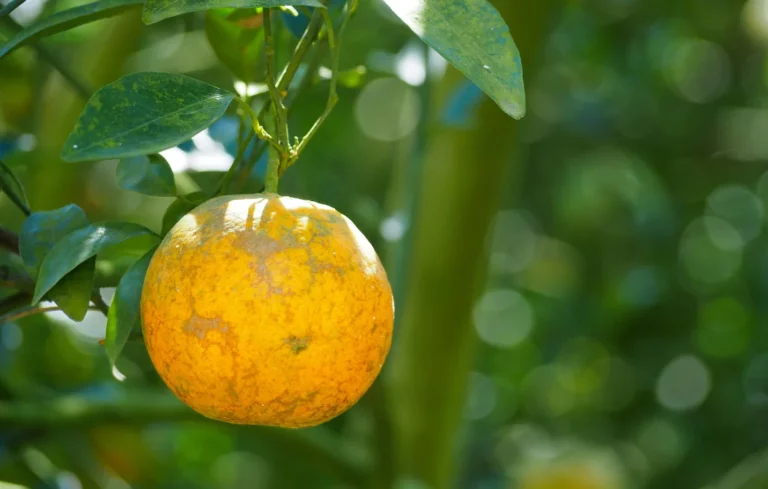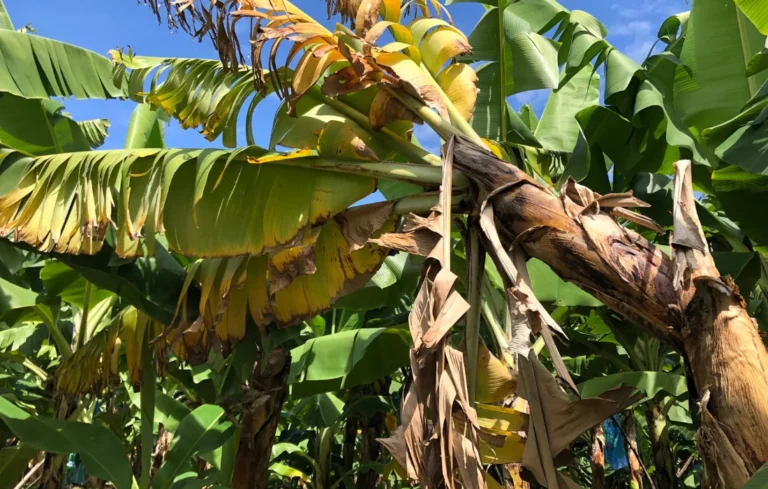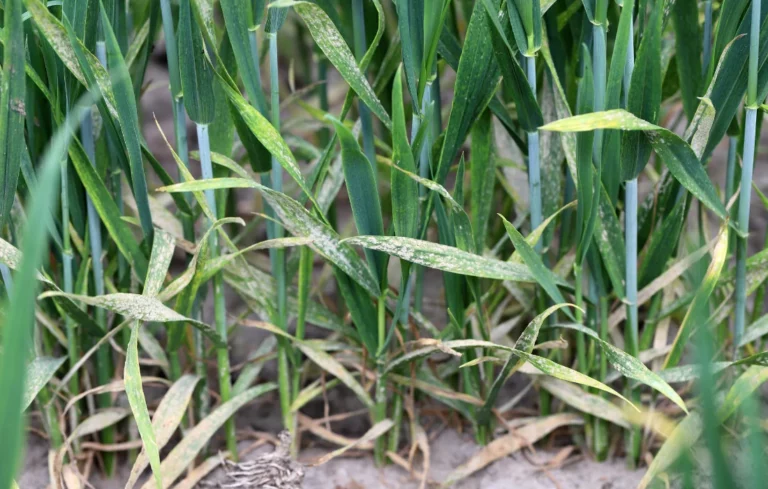Corn is a hardy crop. It is relatively resistant to fungal diseases, owing this relative resistance to its tropical origins and to varietal selection that has historically relied little on phytosanitary treatments. This robustness, however, should not obscure the need for rigorous monitoring. Certain fungal diseases can, under favorable conditions, cause significant damage, affecting both the quantity and quality of harvests. Good agronomic management, a judicious choice of varieties, and careful observation of crops remain the pillars of prevention.
Corn stalk rot
Stem rot results from the combined action of several fungi: Gibberella fujikuroi , Gibberella zeae , Fusarium moniliforme and Fusarium graminearum . These pathogens find ideal conditions for development in the presence of persistent humidity, particularly around flowering.
Symptoms generally appear after flowering. The upper part of the plant suddenly dries up , revealing internal disintegration of the stem. A pink discoloration of the tissues, accompanied by black spots on the external surface, indicates the presence of pathogens. This structural degradation weakens the plant and promotes lodging, with yield losses that can exceed 20% in severe cases.
To limit the incidence of this disease, several agronomic levers can be mobilized. The use of resistant varieties constitutes a first barrier. A reasoned supply of nitrogen, without excess, helps to strengthen the vigor of the stems. A moderate seeding density allows for better aeration of the crop, reducing humidity between plants. Finally, the careful removal of crop residues slows the persistence of fungi in the plot.
Corn anthracnose
Anthracnose is caused by Colletotrichum graminicola , a fungus that attacks various plant organs. It develops when heat is combined with high humidity, conditions common in summer or after a storm.
The first lesions appear as black streaks on the stem , which eventually rot as the mycelium progresses. The leaves, especially those at the base, dry out quickly, before the disease spreads to the nodes and panicles. This upward dynamic affects photosynthesis and compromises grain maturation.
The fungus survives in corn debris, untreated seeds, and certain weeds. Control therefore requires rigorous crop hygiene: destroying residues, limiting regrowth, and avoiding overly short rotations with other susceptible crops. The introduction of more tolerant varieties should also be considered, particularly in areas where anthracnose is endemic.
Northern corn leaf blight
This corn disease is caused by Setosphaeria turcica , a fungus that persists in crop residues and thrives in warm, humid weather. Symptoms and damage include:
- appearance of long pale spots gradually spreading and turning brown,
- affects the leaves, compromising the active leaf surface,
- can slow grain filling, especially in the event of an early attack.
Crop rotation, destruction of debris and selection of resistant varieties can help limit the impact.
Corn kabbiellosis
Also known as corn brown, Kabatiella zeae is caused by the fungus Kabatiella zeae . It appears as small circular spots on the leaves , the center of which becomes translucent, surrounded by a yellow halo. These lesions can spread in humid conditions, causing a progressive weakening of the foliage.
The disease can, in favorable cases, reduce the plant’s photosynthetic capacity. A general decline in vigor can then be observed, making the corn more vulnerable to other stresses. Control is primarily based on observation: the first symptoms should prompt adaptation of practices, particularly by reducing seeding density and promoting diversified rotations. Contaminated debris should be buried or destroyed to limit fungal pressure during the following season.
Need a natural solution for a corn disease?
southern corn leaf blight
Southern corn leaf blight in maize, caused by the fungus Bipolaris maydis , mainly affects the foliage of corn, significantly reducing the plant’s photosynthetic capacity. The first symptoms appear as diffuse yellow areas, quickly replaced by elongated, gray spots with an oily sheen . A fine blackish dust then appears on the surface of these lesions: this is the sporulation of the fungus.
This pathogen persists in the form of spores on crop residues and reactivates as soon as conditions are favorable, generally from August. Alternating heat and humidity stimulates its development, especially in areas where rotations are short and residues are not well buried.
Grain corn losses can exceed 20% if the attack is severe. In forage corn, the impact is particularly significant, as forage quality deteriorates rapidly when the foliage is affected. Prevention relies on careful agronomic management: choosing less susceptible varieties, extending rotation, and recycling debris through controlled grinding or burial.
Common rust of maize (Puccinia sorghi )
Rust is present with varying intensity depending on local climatic conditions. The Puccinia sorghi fungus particularly thrives in temperate, humid weather, with temperatures between 16 and 25°C. Sustained light also promotes sporulation.
The disease begins with the appearance of small chlorotic spots , which develop into orange-brown pustules on the leaf surface. These pustules rupture, releasing brown to black spores that contaminate healthy tissue. Early attacks can cover a large area of the foliage, causing a marked reduction in the photosynthetic surface.
The agronomic consequences are significant: in forage corn, rust causes yield losses of up to 15% by reducing plant mass. In grain corn, a decrease in thousand kernel weight (TKW) is observed, directly linked to incomplete ear filling. Properly managed rotations, good aeration of plots, and the elimination of volunteer corn can limit the pressure of this pathogen.
Corn viruses (mainly MDMV)
Viral diseases, although less common than fungal diseases, can cause significant damage in some plots. MDMV ( Maize Dwarf Mosaic Virus ) is one of the most feared viruses. It is transmitted by aphids, highly mobile vectors whose proliferation depends on summer weather conditions.
The first signs are visual: the leaves become covered with discolored bands forming a mosaic, often accompanied by dwarfing of the plants. The plant remains small, and the ears produced are malformed and sparsely filled. A severe infection can completely compromise the harvest in the affected areas.
Control is based on an indirect strategy: reducing aphid reservoirs, destroying regrowth, weeding borders, and selecting more tolerant varieties. Regular monitoring of aphid populations also makes it possible to anticipate peaks in risk, particularly at the beginning of the growing cycle.
Mycotoxins and associated risks
Corn is susceptible to several mycotoxin-producing fungi, including Fusarium and Aspergillus . Fusarium graminearum is responsible for the production of DON (deoxynivalenol) and zearalenone, while Fusarium verticillioides and Fusarium proliferatum generate fumonisins. Aspergillus flavus , on the other hand, can release aflatoxins, which are particularly toxic.
These toxic compounds develop when conditions are favorable: frequent rains after flowering, high ambient humidity, water stress, high temperatures, or grain injuries caused by insects or drought cracks. Fusarium head blights are particularly conducive to the accumulation of mycotoxins.
Agrobiotop natural solutions against corn diseases
Soil improvement:
Aeration and decompaction of soils, preventing an accumulation of surface water, promoting its rise through hygrometry, promoting the triggering of spores, mycelia and oospores of various corn diseases.
- SILIBOOST (powder to dilute)
- SILIPELLET (granules)
- SOUFREL (natural elemental sulfur, not from petrochemicals)
Biostimulants:
The first line of defense against disease, it strengthens corn crops thanks to complexes of active ingredients that trigger the plants’ defense mechanism.
Against corn diseases
- CHITOPROTECT (Chitosan)
- YAKAPRO (biostimulants)
- BENTOBIO (Strong drying power thanks to this natural sodium bentonite clay. A new and effective solution at a lower cost.)
Do not hesitate to contact us for more information.
Other crop problems:

